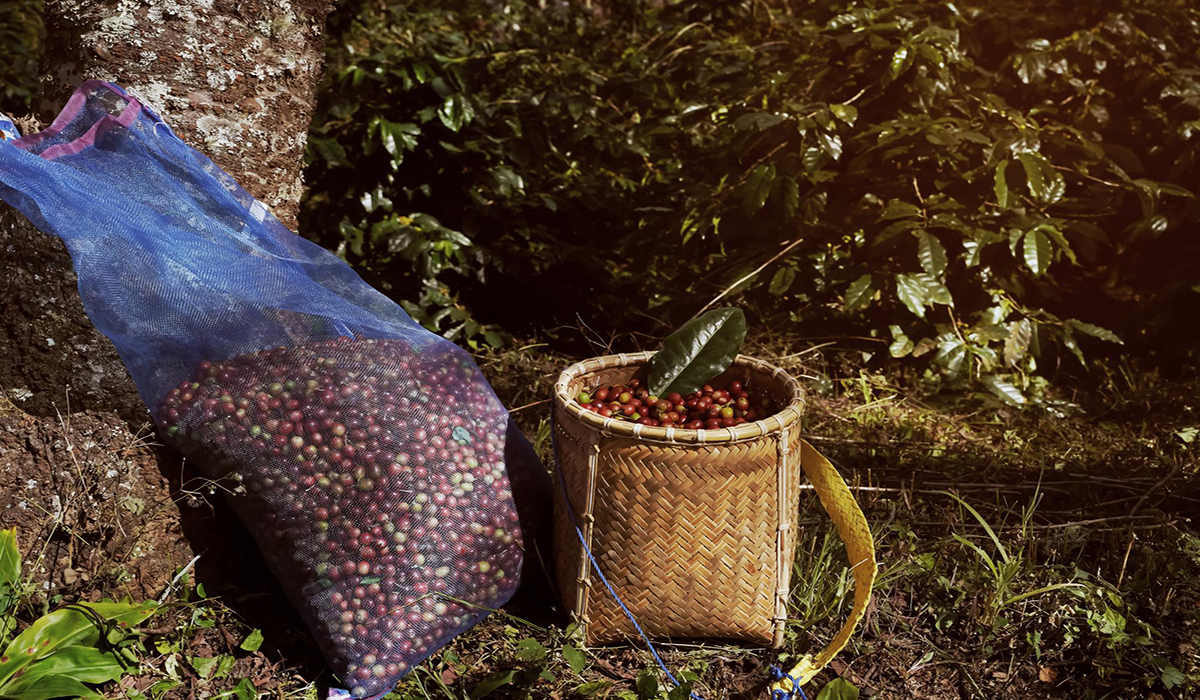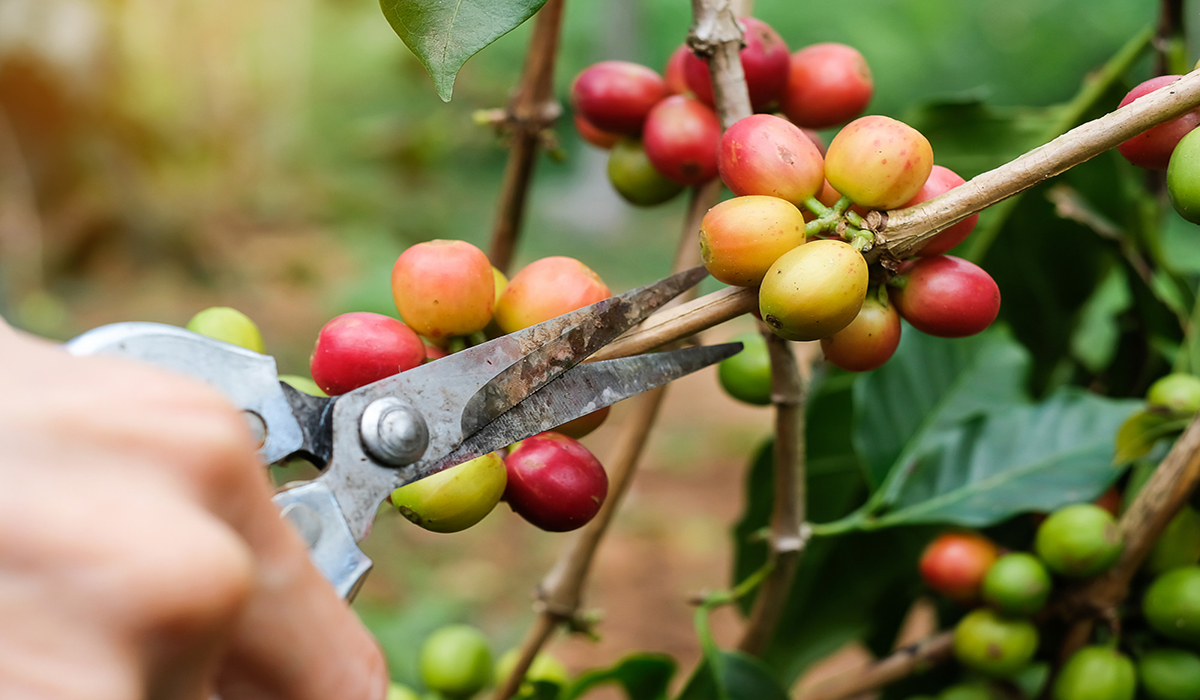Coffee Harvesting Methods: Comparing Different Techniques and Their Impact on Quality

Coffee is one of the most popular beverages worldwide, enjoyed by many. But have you ever wondered how the coffee harvesting methods, timing, and season affect the final quality of this beloved drink? The coffee production process—from planting seedlings to harvesting the fruit and processing—is complex and lengthy, with many factors at each stage influencing the flavor, aroma, and final properties of the coffee.
In the following, we will first explain the importance of the coffee harvest timing and season. Then, we will examine various coffee harvesting methods and analyze the impact of each on the quality of the final product.
The Importance of Harvest Timing and Season on Coffee Quality
One of the key factors in determining the quality of coffee beans is choosing the precise time for harvesting. Usually, the best time to pick coffee cherries is when the fruits are fully ripe and have a red or bright yellow color, depending on the coffee variety. Harvesting at the right time results in beans with a sweeter taste and better aroma.
The coffee harvest season also varies by geographic region and typically ranges from autumn to winter or spring, depending on the climate and weather conditions. For example, in major producing countries like Brazil, the coffee harvest season generally runs from May to September, while in Ethiopia, it can vary from October to December.
Having an accurate understanding of the harvest season helps farmers select the optimal time to pick the cherries, thereby maximizing the quality of the beans.
Coffee Harvesting Steps
The coffee harvesting process involves several essential steps, each of which must be carefully executed according to climatic conditions and coffee type:
- Assessing the Ripeness of Cherries: By observing the color, size, and firmness of the cherries, it is determined whether the harvest time has arrived.
- Selecting the Harvesting Method: Depending on the desired quality and production volume, one of the harvesting methods — selective hand-picking, strip picking, or mechanized harvesting — is chosen.
- Picking the Cherries: Using the selected method, ripe cherries are harvested from the trees.
- Sorting and Separating: After harvesting, unripe and defective fruits are removed to ensure the final bean quality.
- Processing and Drying: Beans undergo washing, drying, and preparation for the roasting stage.
Strict adherence to these steps and proper timing at each stage play a vital role in preserving coffee quality.
Coffee Harvesting Methods
One of the most critical steps is the method of picking coffee cherries from the trees, which has a significant impact on the final product’s quality. Generally, there are three main harvesting methods, each with its own characteristics, advantages, and disadvantages.
These coffee harvesting methods include:
- Selective Hand-Picking
- Strip Picking
- Mechanized Harvesting
The appropriate choice of harvesting method depends entirely on the coffee type, production scale, and desired quality.
Selective Hand-Picking
The Best Harvesting Method for Excellent Quality
One of the best coffee harvesting methods is selective hand-picking, although it is time-consuming and labor-intensive. In this method, skilled farm workers manually and selectively pick only the fully ripe red cherries from the coffee branches.
Unripe and green cherries remain on the trees to mature further and are harvested in subsequent rounds. This process may be repeated several times throughout the coffee harvest season to gradually pick most of the ripe cherries. Although selective hand-picking is a costly and time-consuming process, it guarantees the final product’s quality.
This method ensures that only the best and ripest fruits are harvested, resulting in coffee beans with uniform color, size, flavor, and aroma. Therefore, selective hand-picking is typically used for producing specialty and high-grade coffee varieties such as Arabica, ultimately delivering a fragrant and flavorful cup of coffee to customers.
Strip Picking
Faster but Lower Quality
Another coffee harvesting method is strip picking or bulk hand-picking. In this method, instead of selecting individual ripe cherries, farm workers strip all the cherries from each branch—ripe and unripe alike—with a single hand movement and collect them in baskets.
This harvesting method increases speed and requires less time and cost compared to selective picking. Therefore, it is more suitable for producing regular and economical coffee beans such as Robusta. However, strip picking has its disadvantages.
The main drawback is the lack of separation between ripe and unripe cherries, which can lower the quality of the final product. Even a small amount of green and unripe cherries mixed with the coffee beans can cause unpleasant bitter and astringent flavors in the final cup.
Moreover, due to the bulk picking nature, the cherries are more prone to damage and crushing. To mitigate these issues, producers must perform sorting and separation after harvest to remove defective cherries.
Mechanized Harvesting
Fast and Cost-Effective but with Quality Loss
In large commercial coffee plantations with extensive areas, using manual labor for harvesting is often not cost-effective. In such mostly flat plantations, mechanized harvesting with advanced machinery is an ideal option.
This harvesting method uses special machines that shake and vibrate the coffee trees, causing the cherries to detach from the branches and be collected. The greatest advantage of mechanized harvesting is its extremely high speed and relatively low cost.
Large volumes of coffee cherries can be harvested in a short time. Also, due to the reduced need for labor, production costs decrease. Brazil, one of the world’s largest coffee producers, utilizes mechanized harvesting because of its vast and flat plantations.
However, the disadvantages include machines’ inability to distinguish ripe from unripe cherries, resulting in simultaneous harvesting of both. Additionally, intense shaking may damage the cherries and tree branches. Compared to hand-picking, coffee harvested mechanically tends to have less uniformity and lower quality.
Conclusion
In this article, we reviewed different coffee harvesting methods, as well as the importance of harvest timing and season. We found that how coffee cherries are picked from the trees significantly affects the quality of the final cup.
The more carefully and selectively the cherries are harvested, the higher the likelihood of producing coffee with superior quality, aroma, and flavor.
Among these methods, selective hand-picking, despite being time-consuming and costly, is the best choice for obtaining premium specialty coffee beans. In contrast, strip and mechanized harvesting, though faster and more economical, cannot guarantee top-quality coffee.
Thus, choosing the harvesting method depends entirely on the type of coffee, production scale, and quality standards desired. However, what is clear is that for a great and flavorful cup of coffee, it is essential to use beans harvested with the proper and appropriate method.
At Parto Padideh, as a specialized coffee retailer, we always strive to source the best and highest-quality specialty coffee beans from reputable plantations worldwide so that our valued customers can experience the true flavor and aroma of authentic, exquisite coffee. You too can order your preferred specialty coffee beans, whether Arabica or Robusta, from our selection.


